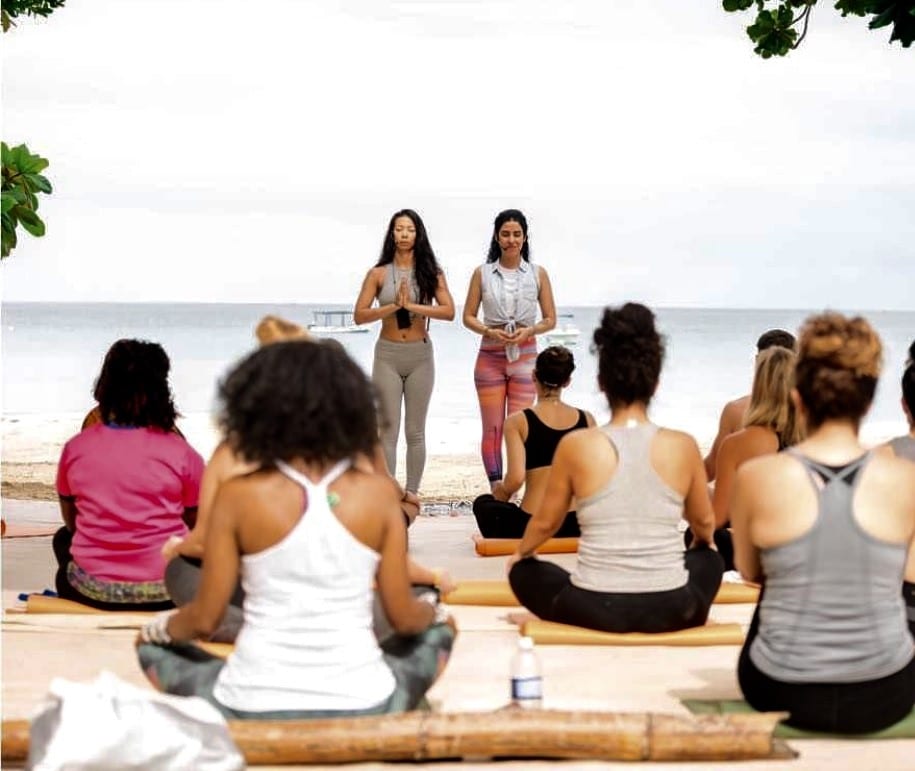Mindful meditation, mindful eating, mindful walking, oh my! The several popular mindful practices that can help your general well-being and yoga is one of them! Read on as we unwrap how basic yoga moves can lead you to the magic of practicing yoga mindfully. Enjoy the magic of mindful yoga.
What is Yoga?
Yoga, an ancient practice whose exact origin and start date cannot be defined (and are debatable) however the general consensus of historical research agree it originated from ancient India. A Sanskrit word, many may not know the term Yoga refers to a group of spiritual, mental and physical practices from the Hindu philosophical traditions going far beyond the physical movements it’s most commonly known for in the Western side of the world today.
In order to highlight the relationship between Yoga and Mindfulness and provide tips on how to practice yoga mindfully, we’ll be referring to the practice of Yoga as the body movement that consists of moving into different body postures called asanas designed to cultivate a meditative state, physical, mental, spiritual strength and general well-being. Popular, traditional asanas include Downward-Facing Dog (traditional name: Adho Mukha Svanasana) great for an overall body stretch that can be done alone and/or is generally part of the Sun Salutation (traditional name: Surya Namaskar) sequence.

There’s been an emergence of many different styles of yoga such as Vinyasa, Kundalini, Bikram, etc. but weaved throughout their differences, is an acknowledgement to the practice originating in the East, an acknowledgment of the power of breath, meditation and a purpose of cultivating general well-being. The beauty of so much variety is that there’s something for everyone and if embraced, the process of finding the type of yoga that resonates most with you is enjoyable.
What Is Mindful Yoga?
Before we get into what mindful yoga is, a friendly reminder that mindfulness is paying attention in a particular way that is purposeful, in the present moment and non-judgemental (according to Jon Kabat-Zinn). In accepting this widely popular, we become open to understanding that a variety of activities that span beyond the traditional seated mindful meditation can be done mindfully (for example, we can walk mindfully). Mindful yoga therefore, is not necessarily a specific class or sequence of asanas but more of an approach and/or perspective that can be brought to the practice of any kind of yoga (though you can find yoga studios and instructors that use the term on their class schedules). That being said, to practice mindful yoga, you don’t need to learn new asanas, you just need to bring a mindful approach to the practice you already have.

How Can You Practice Mindful Yoga?
Here are some simple tips:
*Set an intention: Bring purpose to your practice by setting an intention prior to getting started. If you’re going to a group class, your instructor may create space for this in the beginning but don’t depend on their prompt; take a moment before to acknowledge what brought you to practice that day (for example, perhaps your shoulders feel tight and you want the slow, deep stretching often found in a Restorative Yoga class).
*Limit outside distractions: Generally a ‘no cell-phone’ rule exists in most yoga studios and for good reason; your practice is a time to connect with yourself and that gets harder to do with the ping of phone going off. Make it easier for yourself to stay in the present moment by putting away electronic devices and finding a space that helps you feel centered and calm.

*Stay focused: So you put away your phone but feel distracted by your thoughts? Don’t get disheartened; a wandering mind is not uncommon and yoga is designed to help with that problem. When you notice you’re no longer in the present moment, bring your attention back to how your body feels in the asana you’re in or use your breathe to reconnect with the present moment.
*Embrace imperfection: Your goal for practice does not have to be to perfect each posture; don’t judge yourself. Comparison is the thief of joy so don’t be hard on yourself if you’re not as advanced as your instructor or classmate, instead of getting anxiety about what your body can’t do, embrace it lovingly for what it can do.
Main Image Photo Credit: www.iriesoul.com
Rachna Sethi
Author
Rachna (@thesassyspiritual) is a graduate of the Applied Mindfulness Meditation program from the University of Toronto, a certified Educator with two bachelor degrees and a diploma in Art Therapy. She's dedicated to living with a compassionate approach. Committed to helping people integrate Mindfuln...


















































































































